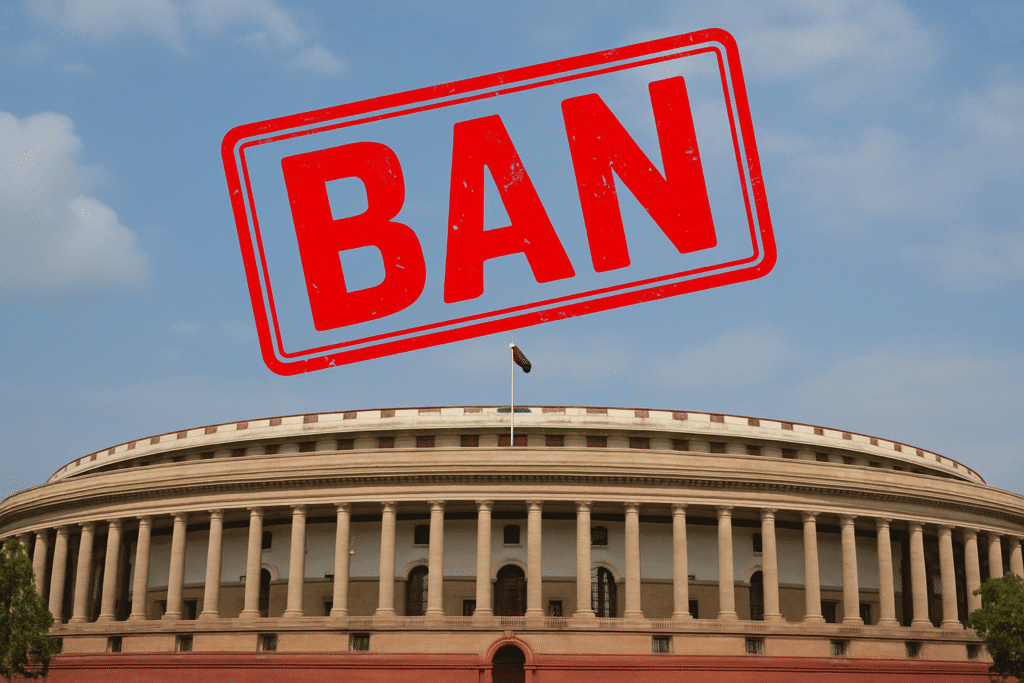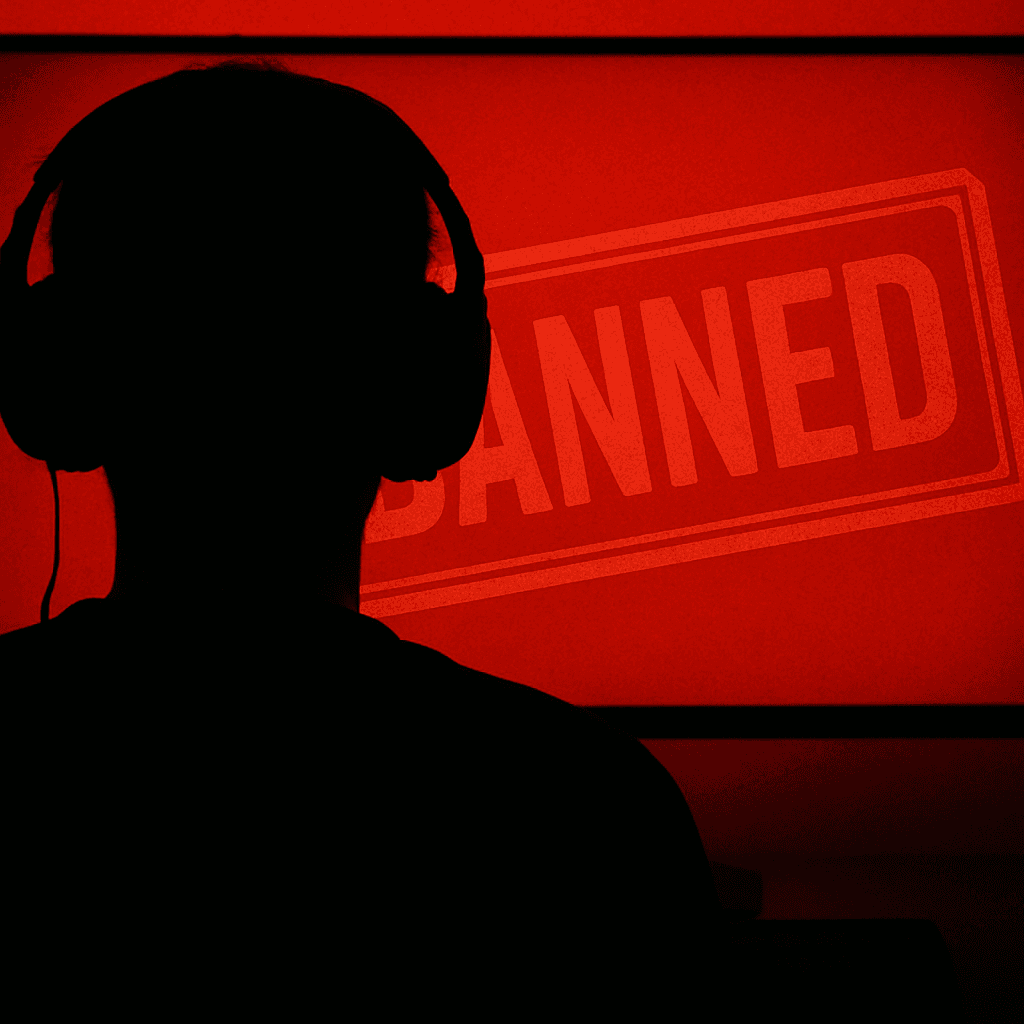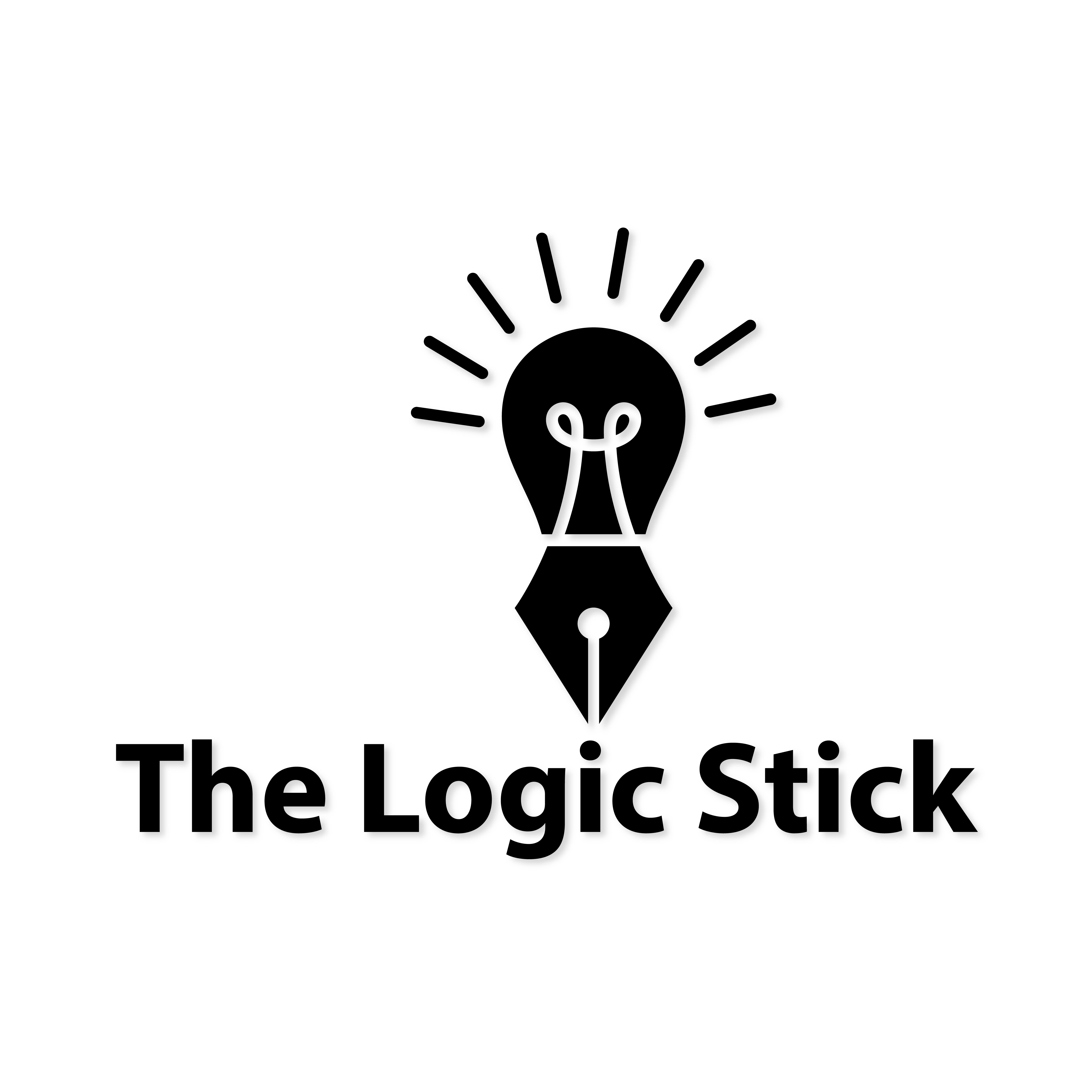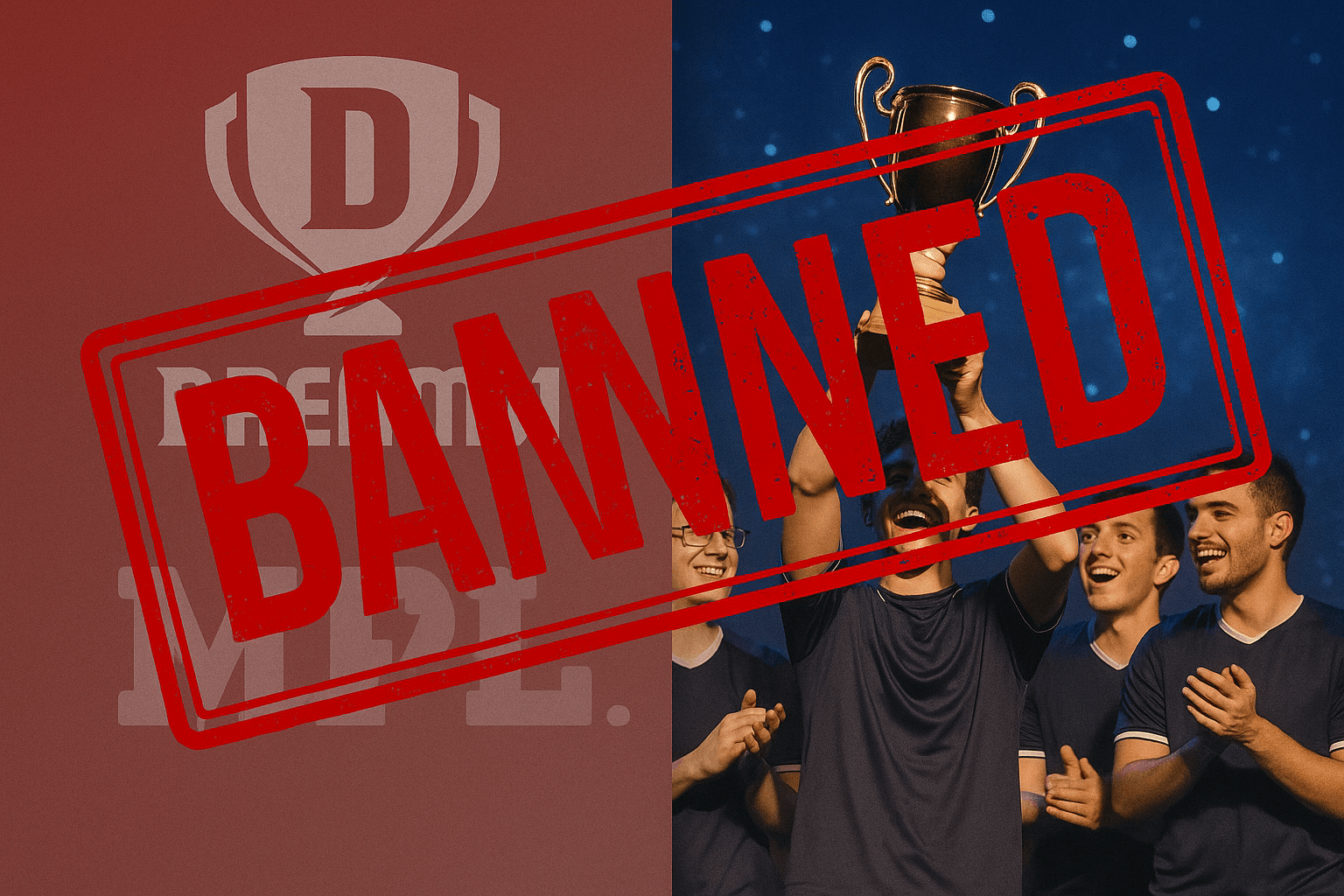
1. Introduction: A Landmark Bill in India’s Digital Evolution
On 20–21 August 2025, the Lok Sabha passed the Promotion and Regulation of Online Gaming Ban Bill, 2025, in a rapid and unprecedented manner—with the bill introduced and passed within hours and without debate. This marks a pivotal shift in India’s digital policy: a bold effort to ban real‑money online gaming, while simultaneously rehabilitating and promoting e-sports and social gaming under a strict regulatory regime .
2. What’s in the Bill: Provisions, Penalties, Regulatory Framework
2.1. Scope and Offenses
The legislation imposes a sweeping ban on real‑money online games, explicitly outlawing activities whether based on skill, chance, or both—spanning fantasy sports (such as Dream11, MPL), poker, rummy, card games, lotteries, and other wagering platforms. Notably, users (players) are not criminalized—they are treated as victims rather than offenders .
The bill also prohibits advertisements, celebrity endorsements, and even financial facilitation by banks or intermediaries for real‑money gaming.
2.2. Penalties and Enforcement
- Offering/facilitating real‑money gaming: Up to 3 years’ imprisonment and/or ₹1 crore fine.
- Repeat offenses: Harsher—3 to 5 years imprisonment, fines up to ₹2 crore.
- Promoting or advertising: Up to 2 years imprisonment and/or ₹50 lakh fine.
- Financial institutions enabling payments: Similar penalties as operators.
- In certain cases, unlicensed operation, misleading advertising, and violation of safeguards are cognizable and non-bailable offenses.
- Authorities empowered with warrantless search, seizure, and investigation powers; companies held liable unless due diligence is demonstrated; protection offered to non-executive directors www.ndtv.comThe Indian Express.
2.3. Regulatory Infrastructure
- Establishes a central National Online Gaming Commission (NOGC) as the statutory regulatory body (similar to a commission) to license, classify and oversee online gaming platforms.
- State-level bodies may exist under NOGC supervision.
- Games to be classified into:
- Permissible online skill games (e‑sports, fantasy—but note, real‑money fantasy is now banned).
- Prohibited games of chance or hybrid models—the NOGC has final say.
- Licensing is mandatory: only licensed platforms can operate, advertise, accept deposits, and conduct prize-based competitions; licences may be suspended/cancelled for violations .
- Responsible gaming measures: Age/identity verification, self-exclusion, deposit/time limits, warnings, grievance systems, and data protection protocols.
- Financial safeguards: Segregated user funds, anti-money laundering compliance, and adherence to FEMA and PMLA laws
- Dispute redressal via an Online Gaming Appellate Tribunal, with court-like powers and appeals going up to the Supreme Court
- The Act also includes industry promotion provisions—recognising gaming as a sector for government incentives, support for esports infrastructure, mental health research, and skills training
3. The 5 W’s: A Comprehensive Breakdown
Who?
- Government: IT Ministry (MeitY), with Home Ministry involvement; spearheaded by Union Minister Ashwini Vaishnaw
- Targeted: Online gaming platforms (Dream11, MPL, PokerBaazi, Games24x7, etc.), Advertisers, Celeb Promoters, Banks/Payment processors, and regulators to be established.
- Beneficiaries (potential): Esports, casual and educational gaming sectors.
- Affected: Millions of players, employees, and the entire existing fantasy/real-money ecosystem.
Also read – The questions we are afraid to ask in a marriage?
What?
- A blanket ban on real‑money online gaming, regardless of skill vs. chance classification.
- A new licensing and regulatory regime for permissible games.
- Enforcement powers, penalties, and infrastructure to oversee the sector.
Why?
- Address rising addiction, financial ruin, mental health crises, and even suicides tied to real‑money gaming News on AirThe Times of IndiaReuters.
- Curb misuse for money laundering, terror financing, tax evasion, and cross-border operations ReutersThe Indian Express.
- Protect youth and families; maintain public health, order, and national security .
- Establish uniform national policy replacing fragmented state rules
- Promote responsible innovation—particularly e-sports, skill-based, social, and educational gaming
Where?
- Pan-India jurisdiction, covering all platforms regardless of origin—onshore or offshore.
- Existing under the Information Technology Act, 2000, enabling blocking of offending platforms.
When?
- Bill passed Lok Sabha: 20–21 August 2025
- Next steps: Must clear Rajya Sabha, then get Presidential assent to become law.
- Implementation timeline: Expected to begin “shortly after assent” with immediate enforcement (blocking, penalties, licensing).
- Expert estimates suggest weeks to a few months for full roll-out, depending on notification, regulator setup, and infrastructure readiness.
4. Industry Impact: Numbers, Jobs, Market Size
4.1. Market Overview
- India’s online gaming industry (as of 2023): Estimated ₹23,000 crore (~US$2.8 billion), with ~50,000 direct jobs, 100,000+ indirect roles, and 10,000+ content creators Wikipedia.
- Projected growth to ₹70,000 crore (~US$8.6 billion) by 2027 Wikipedia.
- Real‑money gaming segment: Valued at $3.6–4 billion, with key players like Dream11 ($8 billion valuation) and MPL ($2.5 billion)
4.2. Employment and Jobs at Risk
- As per Livemint, over 20,000 job cuts could ensue, and more than 300 companies could be forced to shut down operations mint.
- Some projections go as high as 200,000+ jobs impacted, considering the broader ecosystem (platforms, support services, events, content creators, etc.) RedditWikipedia.
- The ban may affect local sports beyond cricket, as real‑money game ads funded grassroots tournaments and media revenues mint.

4.3. Economic & Tax Implications
- GST and tax revenue could face substantial decline—analysts warn of up to ₹20,000 crore in lost compliance and tax collection StocktwitsWikipedia.
- Investor sentiment has dipped: Regulations create uncertainty for startups, while affected stocks like Delta Corp and Nazara reflect diverging risk profiles—Delta is highly vulnerable; Nazara, more diversified, faces limited risk Stocktwits.
5. Industry Responses & Alternatives
5.1. Pushback and Concerns
- Industry bodies and players highlight that a blanket ban blurs the lines between skill and chance—pushing players to illegal, offshore platforms, increasing risks.
- Lawmakers and critics (e.g., Shashi Tharoor, Karti Chidambaram) have condemned the absence of stakeholder consultation, calling it knee-jerk and regressive.
- The Esports Players Welfare Association (EPWA) warns that many professionals, coaches, and creators could lose livelihoods; they advocate for regulation rather than prohibition .
- AIGF (All India Gaming Federation) argues for self-regulation and shared responsibility, stressing industry importance and tax contributions Wikipedia.
5.2. Strategic Pivot and Survival
- Transition to Non‑Monetary Gaming: Platforms are expected to pivot toward pure skill, casual, or educational gaming, relying on gamification and ad/revenue models rather than stakes.
- E‑sports Focus: The law promotes esports—platforms can build competitive gaming leagues, training, and monetization through sponsorship, media rights, and events.
- Go Public (IPOs): Some firms, seeing uncertain future in real‑money gaming, are exploring public listings to diversify capital sources and gain stability The Economic Times.
- Lobby and Legal Recourse: Industry may challenge constitutional grounds, pushing for more nuanced classification, or selective regulation.
- Diversification: Companies might move into adjacent sectors like game development, international markets, educational tech, or infrastructure services.
6. Societal and Policy Implications
6.1. Addressing Social Concerns
- Ban directly targets gambling addiction, financial ruin, and mental health fallout among youth.
- Legal framework enforces responsible gaming, altering the narrative from profit-centric to public welfare-centric.
6.2. Regulatory Precedent and Governance
- Establishing NOGC sets India on track to benchmark against global agencies regulating gaming (similar to financial regulators or esports arbitration bodies).
- Uniform national policy likely to reduce state-wise grey zones, enhancing clarity and reducing legal arbitrage.
6.3. Innovation vs. Over-Regulation
- Promoting e-sports, safe gaming, and technology investment;
- Critics argue risk of stifling growth, inhibiting the entrepreneurial ecosystem, and ceding ground to unregulated offshore platforms.
7. Timeline and Expectations
| Phase | Description | Timeline (Projected) |
|---|---|---|
| Bill Passed (Lok Sabha) | Prohibition and regulation launched | 20–21 August 2025 |
| Rajya Sabha & President’s Assent | Legalization as law | Likely weeks to 2 months |
| Notification & Regulator Setup | Formal rules, NOGC formation, licensing mechanisms | 2–6 months post assent |
| Enforcement Rollout | Blocking, licence applications, monitoring, ad ban | Starts immediately after notification |
| Full Transition | Platforms pivot, job impact stabilizes | Over 6–12 months |
8. Conclusion: A Turning Point in India’s Digital Landscape
The Promotion and Regulation of Online Gaming Act, 2025, represents a defining moment in India’s digital regulatory journey—marking a hardline stance against real‑money online gaming, and a strategic shift toward structured, safe, and skill-based digital entertainment.
The pros:
- Protection of public interest,
- Regulatory clarity,
- Growth potential in esports and legitimate gaming sectors.
The cons:
- Massive job losses and company closures,
- Potential migration to unregulated platforms,
- Risk of over-regulation limiting innovation.
The battle now lies in efficient implementation, balanced enforcement, and industry adaptation—whether through smart pivots, IPOs, or new business models. It also opens the door for open dialogues between the government, industry bodies (like AIGF), creators, and consumer groups to co-create a resilient, responsible digital gaming ecosystem.






